Comprehensive locksmith services from new keys to high security locks, safes, and commercial mailboxes!
We've been your one stop security source since 1926!
6020 Paseo Del Norte
Suite B
Carlsbad, CA 92011
No job is too big or too small
We're your one-stop security source!
Safe & Vault Masters
Only safes can provide the extra security you need.
Emergency Lockout Services
Law Enforcement Discount
Warranties Available
Hours:
Get the Extra Security You Need With a New Safe
Simply buying a safe won’t necessarily provide you with the level of protection you need. Many safes are designed with a specific purpose in mind, and taking into account what exactly you’ll be storing is an important step.
The professional, licensed and authorized locksmiths at A-1 Lock and Safe will work with you to ensure that the safe you buy is the right fit for you and your property. We’d never sell you a safe that you don’t need, and have the residential and commercial safe industry experience that you can rely on.
Safe Sales
- Home Safes
- Office Safes
- Gun Vaults
- Jewelry Safes
- Fireproof Safes
Safe Services
- Complete Service
- Safe Moving
- Safes Opened
- Combination Changes
- Safe Installation
Haven’t Opened Your Safe In Ages? Don't Panic. We’ll Get You Back In.
In addition to safe sales we also provide full safe opening and moving services. If it’s been years since you’ve opened your safe, you’re not alone.
Safes often sit for long periods, during which time keys are lost and combinations forgotten. In all of these cases, we can help.
Give us a call today and one of our friendly technicians will come to your location to help you with your safe. Whether you need it opened, the combination changed, or you need the safe moved to a different location, Safe and Vault Masters is the only call you need to make.
Retrofit Electric Locks
If you have trouble dialing your mechanical safe dial open, have the need to open the safe fast (for cash or weapons), if your floor safe is hidden and difficult to get to, or just hard to see in the dark, an electronic dial might be what you need to help you.
As simple as dialing a telephone, an electronic dial gives access to your safe in under 5 seconds. Just about every brand of lock offers extra protection as it will lockout for up to 15 minutes if 3 wrong "guess" attempts were made. We can replace almost any rotary mechanical lock in a burglary or fire safe with a Group 2 lock and easily install these for you. We can come to you or you can bring the door in to us, if it isn't too heavy.
Please call or email us to learn more about these locks.
Burglary & Fire Safe Rating Guide
WHY ARE SECURITY RATINGS & CLASSIFICATIONS IMPORTANT?
Webster's dictionary defines safe as, "a container for keeping articles (as valuables) secure". Even a fishing tackle box meets this definition, so we need to refine the term a bit. Without a better understanding of what you are entrusting your valuables to, you risk investing in a false sense of security. That’s where classifications, ratings and labels come in.
The rating or classification of a safe indicates the degree of protection that safe will provide its contents in the case of fire or attempted burglary. Higher levels of protection involve higher costs to the manufacturer and higher value to the consumer. As a result the degree of protection will affect the selling price of the safe.
Safes are labeled or classified using two different methods: construction and performance. Construction classification relates to burglar protection and is determined by the specifications of the safe. Performance ratings are determined by tests designed to replicate safes in fire and burglary situations.
Many safe manufacturers have their products performance tested. Safes can be tested for resistance to burglary and/or fire by the manufacturer or by an independent testing agency. The best known independent burglary and fire testing agency is United Laboratories (UL). Intertek-ETL and Mercury are two other highly reputable companies that perform independent testing for fire resistance. Independent testing is expensive for the manufacturer but provides the consumer an extra level of confidence.
Before you purchase a safe, you should know what these ratings mean to you to insure that you are not considering a safe without the proper protection. You may want to check with your insurance company to see if they require a certain type of safe.
We will assist you in making the proper decision.
BURGLAR RATINGS & CLASSIFICATIONS
Industry standards for burglar resistance are indicated by construction and performance ratings. Construction ratings were established many years ago by the insurance industry and performance ratings have been developed by UL.
Construction Ratings
As mentioned above, construction ratings indicate the specifications of the safe. The construction ratings are listed below along with the associated specifications in increasing degrees of burglar resistance.
Performance Ratings
UL established burglary (and fire) ratings that are regarded as the gold standard in the safe industry. In addition to setting standards of performance, many of UL’s burglary ratings specify construction requirements.
UNDERWATER LABORATORIES
Underwriters Laboratories (UL) is an independent product safety certification organization that has been testing products and writing standards for safety for more than a century. UL evaluates more than 19,000 types of products, components, materials and systems annually with 20 billion UL Marks appearing on 66,000 manufacturers' products each year. UL's worldwide family of companies and network of service providers includes 68 laboratory, testing and certification facilities serving customers in 102 countries.
BELOW ARE DESCRIPTIONS OF THE MOST COMMON UL BURGLARY CLASSIFICATIONS:
UL LABEL – RESIDENTIAL SECURITY CONTAINER (RSC)
Performance Requirements
Indicates the ability to withstand 5 full minutes of rigorous prying, drilling, punching, chiseling, and tampering attacks by UL technicians.
UL LABEL – BURGLARY CLASSIFICATION TL-15
Signifies a combination-locked safe designed to offer a limited degree of protection against attack by common mechanical and electrical hand tools and any combination of these means.
Only safes can provide the extra security you need.
Construction Requirements
- UL listed Group II, 1 or 1R combination lock (even the locks are tested and rated by UL).
- 750 lbs. minimum or comes with instructions for anchoring in a larger safe, concrete blocks or on the premises where used.
- Body walls of material equivalent to at least 1" open hearth steel with a minimum tensile strength of 50,000 P.S.I.
- Walls fastened in a manner equivalent to continuous ¼" penetration weld of open hearth steel with minimum tensile strength of 50,000 P.S.I.
- One hole ¼" or less, to accommodate electrical conductors arranged to have no direct view of the door or locking mechanism.
UL LABEL – BURGLARLY CLASSIFICATION TL-30
Signifies a combination-locked safe designed to offer a moderate degree of protection against attack by common mechanical and electrical hand tools and any combination of these means.
Construction Requirements
Same as TL-15
Performance Requirements
Successfully resist entry* for a net working time of 30 minutes when attacked with common hand tools, picking tools, mechanical or portable electric tools, grinding points, carbide drills and pressure applying devices or mechanisms, abrasive cutting wheels and power saws.
*Entry = opening the door or making a six square inch opening entirely through the door or front face.
FIRE RATINGS & CLASSIFICATIONS
Fire ratings and classifications involve three primary components; the maximum exterior temperature, length of time and maximum interior temperature. Underwriters Laboratories (UL) also tests for explosion hazard and offers optional testing for impact. When considering protection of electronic media, testing for humidity should also be done.
It is generally agreed that a maximum interior temperature of 350°F is adequate for most valuables, with paper charring at 450°F. Electronic media is more sensitive and therefore subject to a higher standard, commonly accepted to be either 150°F with a maximum 85% humidity or 125°F with a maximum of 80% humidity according to what type of electronic media being protected.
UL FIRE TESTING
UL offers the most comprehensive and stringent fire testing. Manufacturers can request their products be fire tested for up to three criteria; fire endurance, explosion hazard and impact. Passing the first two are required to carry a UL fire label, the third, impact, is optional.
Test products may be expected to protect a variety of different types of items for different lengths of time. To address these variables UL offers three different temperatures and five different time durations.
The temperature noted on the UL label (i.e. Class 350) indicates the maximum temperature reached on the interior of the safe during testing. Most valuables will be well protected in a safe that maintains an interior temperature of no more than 350°F. With paper charring at 450°F the 350°F maximum is usually adequate. Electronic media is more sensitive. For tapes, cartridges, microfiche, and microfilm, the limit is 150°F with an 85% humidity restriction; for diskettes, the temperature cannot exceed 125°F with an 80% humidity restriction.
The time noted on the UL label indicates how long the product was tested to withstand the extreme temperatures while maintaining the indicated maximum interior temperature and, if it applies, humidity.
The time rating also designates how hot the exterior temperature will get during the testing process. The product is placed in a furnace and the temperature rises over time.
There is a correlation between time and maximum temperature as follows:
UL TEST DESCRIPTIONS
Fire Endurance Test: Contents are distributed throughout the fire resistant product to be tested. UL uses heat sensors to monitor the internal temperature during testing. These are placed at the bottom, top and on all four side walls of the product being tested. Moisture sensors are used to measure humidity, with one placed 18 inches from the top and one 18 inches from the bottom, both midway between side walls.
For products testing to meet the Class 150 or 125 requirements, the product is first conditioned for at least twelve hours prior to the test. This conditioning ensures that the starting temperature of the interior will be between 65°F and 75°F and the relative humidity will be below 65%. This is considered to be equivalent to normal room conditions.
Depending upon the classification being tested, the furnace heat rises at a carefully monitored rate until the specified temperature is reached. Great care is taken to make sure the furnace heat is distributed evenly over the exposed surfaces of the products.
After the temperature and time is reached, for example one hour - 1700°F, the furnace is turned off. The test product is then allowed to cool in the unopened furnace until a significant decrease in the internal temperature is noted. This cooling process can take as long as 68 hours. During this cooling period, the tested product continues to absorb the heat in the furnace and the interior temperature of the product can continue to rise rapidly. It is during this critical point of the test that many products fail the test, particularly at the 125°F 80% humidity level. Only products whose internal temperature and humidity level remains below the test limits during the entire heating and cooling processes are awarded the label.
Finally, the product is opened and examined to determine whether the contents are still in usable condition. The interior walls and components are checked for any evidence of heat or humidity damage.
One year after this initial test has been conducted a sample product may be pulled out of production for retesting. The product must once again pass the original classification it was tested for to keep its UL label.
Fire and Impact Test
After a product has passed the Fire Endurance Test, another sample of the same product may be tested for fire and impact. The sample is prepared in the same manner as the Fire Endurance Test. Then it is heated to a specific time and temperature (see chart below). After the product has been exposed for the correct time period, it is immediately removed from the furnace and raised 30 feet off the ground. UL then drops the product within two minutes into a pile of broken brick on a concrete base. This is equivalent to a fall form a third story.
After the impact, the unit is carefully examined for any signs of deformation, rupture of insulation or parts, or openings into the interior of the product. Because products do not always land right-side-up in real life situations, the product is turned upside down after cooling. The product is then reheated to check exposure to heat.
Once the product has re-cooled, it is opened and dismantled. The testers examine the usability of contents, condition of the interior finish, security of locks, part fastenings and any signs of undue transmission of heat or moisture. One year later, UL may repeat this test on an identical product pulled from the production line.
The Explosion Test
All UL classified insulated record protection (this includes any safe that carries a UL fire resistance label) equipment must pass the explosion test. For this test, the sample is prepared in the same manner as for the two previous tests. The test furnace is left empty and heated to 2000°F. The testers quickly open the door and insert the sample. For 30 minutes (20 minutes for units rated ½ hour), the furnace is kept at 2000°F. If no explosion takes place, the sample remains in the furnace until it cools sufficiently to handle.
The sample is then forced to open and examined for heat or moisture damage. The interior finish, insulation, security or interior equipment, locks and fastening between parts, all undergo detailed inspection.
At the option of the manufacturer, the Impact and Explosion tests can be combined. The sample is inserted in the furnace to test for explosion, and then dropped 30 feet. The sample is then reheated and cooled again, and finally, examined carefully.
UL Fire Label
The UL Fire Label will look something like the following.
Record Protection Equipment
Classified By Underwriters Laboratories, Inc
As To Fire Resistance
Rating: Class_______-____Hr
MERCURY FIRE TESTING
With Class to be 350 degrees, 150 degress, 125 degress and Hr to be half, 1, 2, 3, or 4.
Mercury was chosen by American Security Products perform fire testing on AMSEC gun safes.
Mercury’s fire ratings are as follows:
INTERTEK-ETL FIRE TESTING
Intertek has more than 100 years of experience in consumer and industrial testing verifications. They help local and global businesses and organizations ensure that their products meet industry standards and consumer expectations for safety and quality.
Intertek-ETL was selected to perform fire testing for Cannon Safes.
The largest safe in each series was selected for testing. Smaller safes keep their contents cooler longer than larger safes so if the larger safe passes the test it is logical to conclude that the smaller one would as well. The safe was fitted with multiple thermo-sensors placed in a variety of locations within the safe including upper tier installation recognizing that the top portion of the safe reaches a higher temperature than the lower section.
The safe is subjected to a rapid ramp up in temperature; 1200°F in about 10 minutes. This temperature is held for the duration of the test, with total test times being 30, 60 or 90 minutes. The fire ratings are determined by the time it takes any one sensor to reach 350°F.
Get Added Security for Your Valuables
Call us today to find the best safe for your needs.
(760) 431-5397
I have an expensive safe with an electronic dial but we lost the combo to it. All of the lock and safe companies I called told me that it has to be drilled to open it. A1 Lock advertises that they offer drill free opening so I called them. It sounded too good to be true.
They actually did come out and in less than 30 minutes, my safe was open without a scratch Thank you!
- Bauman Kohler


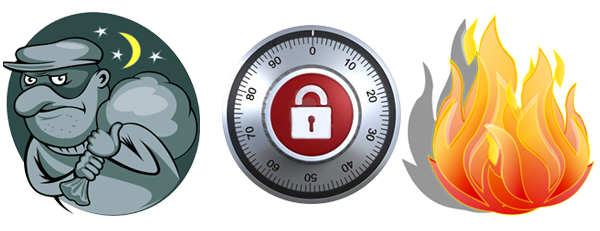
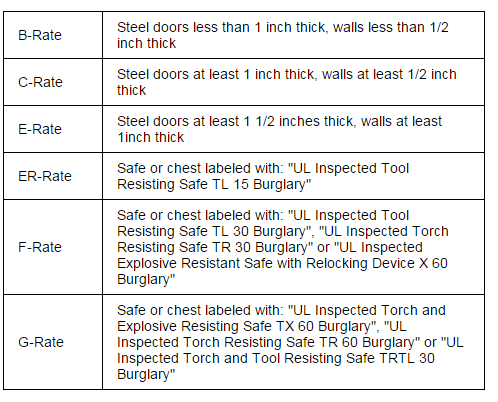
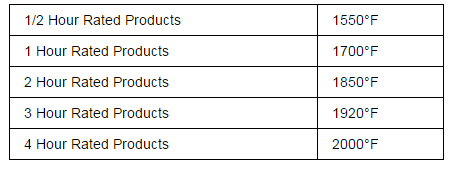
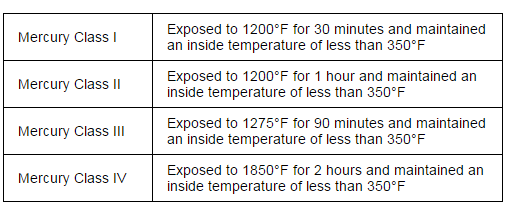
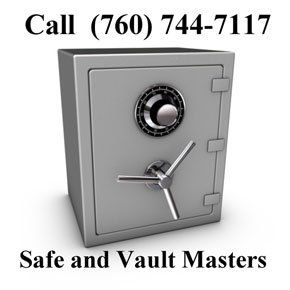
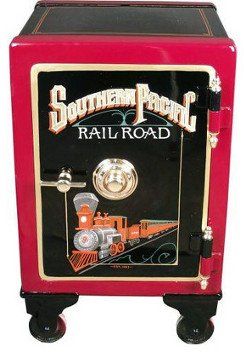

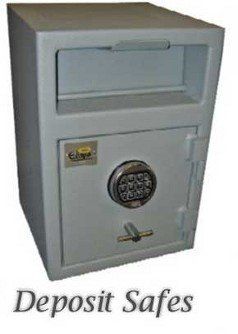
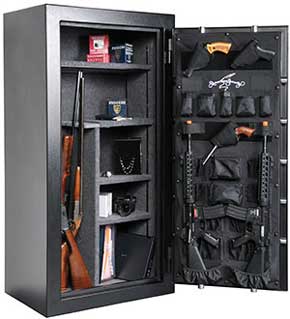
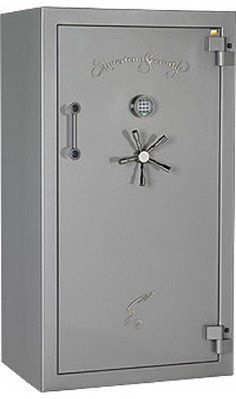
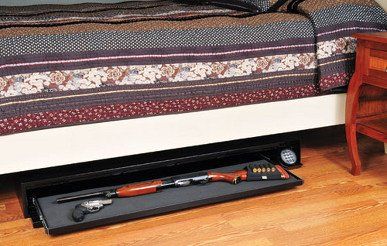
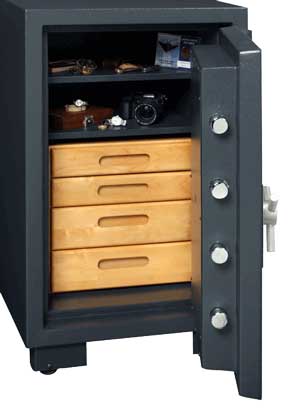
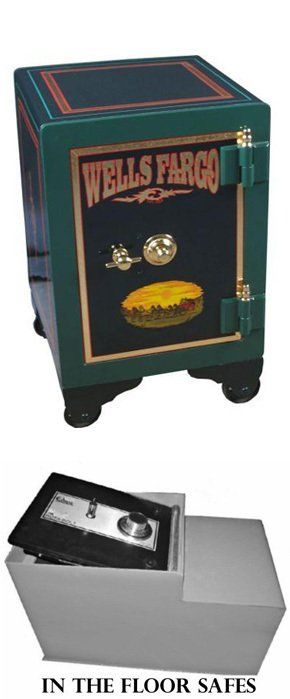
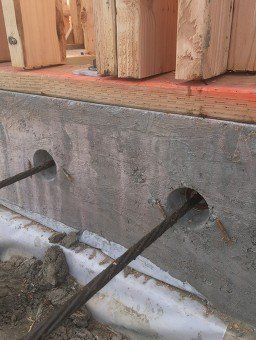

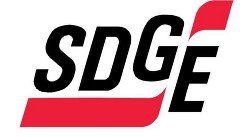



Share On: